036 The Problem with Kitsch Jesus
Picture credits below
You’ll find him in Christian bookstores, on ‘Christian art’ sites, and all over Facebook. He may well hang on your friend’s lounge room wall, or even on your own. He is kitsch Jesus. But while he may remind us of how sweet, gentle and in control of the world he is, unfortunately kitsch Jesus has a problem.
Click To Listen
Podcast: Subscribe in iTunes | Right-click to download | Listen to Other Episodes
I Believe in [Kitsch] Jesus
In that ancient statement of faith called The Apostle’s Creed we read this: ‘I believe in… Jesus Christ, [God’s] only begotten Son, our lord.’ Do a Google image search on this Jesus and you’ll wonder why on earth more people don’t believe in him.
Because he’s good with animals…
He’s good with children…
And he plays a decent game of gridiron…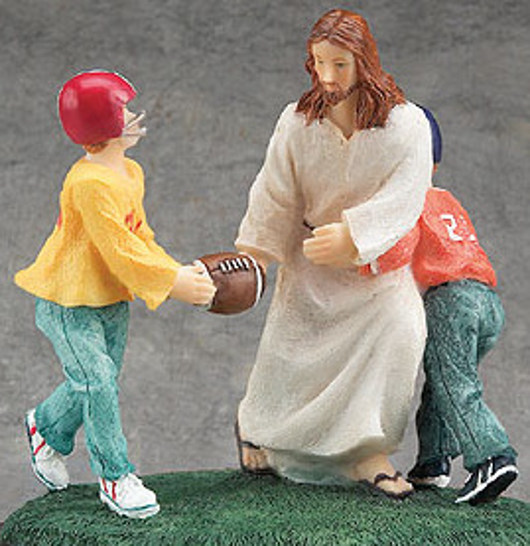
He loves his Dad…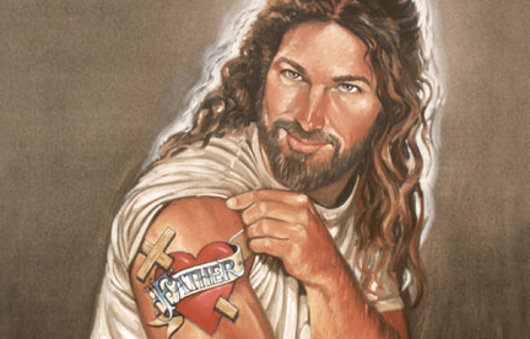
He looks good in soft focus…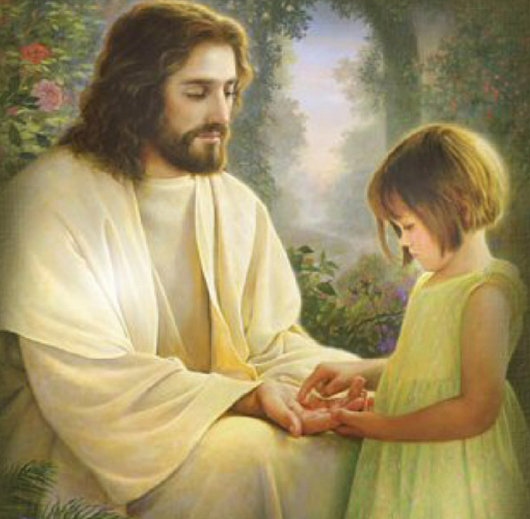
And just a moment spent with him turns anyone into a supermodel…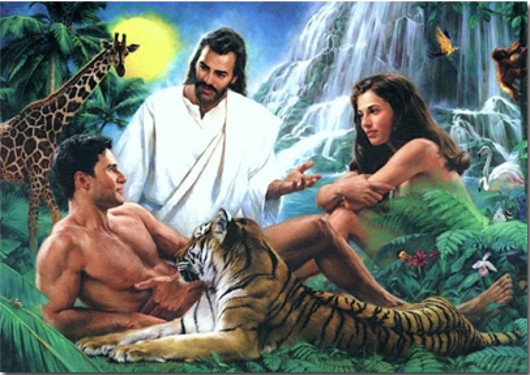
He laughs at the devil…
He drops in on special occasions…
And meets 21st-century prodigal sons dressed in his finest 1st-century clothes…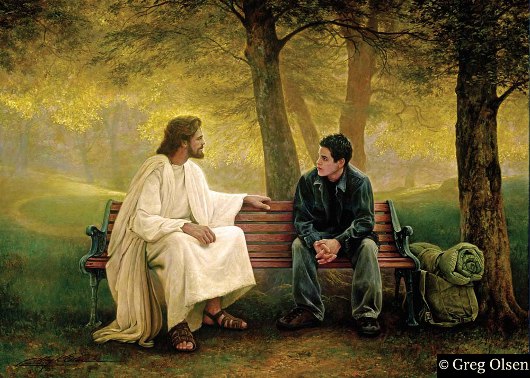
Did I mention he likes animals?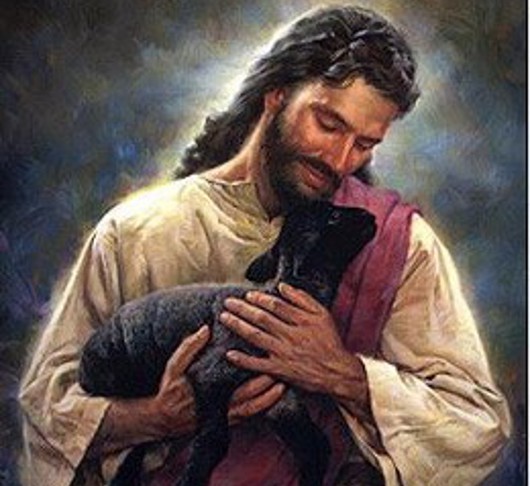
Especially lambs…
He loves lambs…
Lots of lambs…
Wherever he goes love hearts appear in the sky…
And he gives his own heart to you too…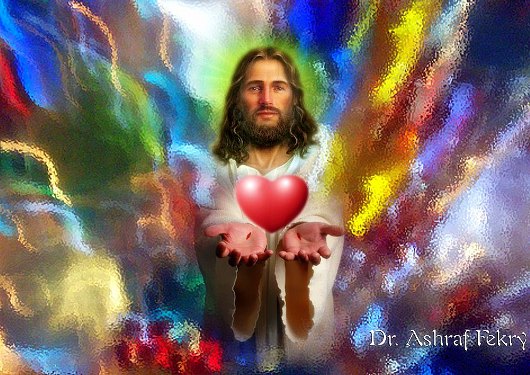
Yes, I believe in Jesus Christ, God’s Son…
Who gave up a pro boxing career to become our saviour…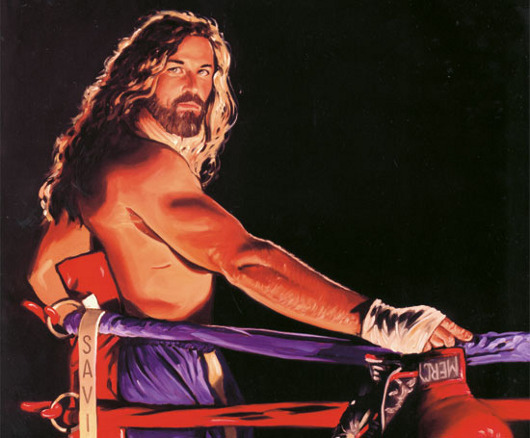
The Problem With Kitsch Jesus
The internet is littered with such images—images of kitsch Jesus. Kitsch Jesus is a Jesus with straight teeth, perfect skin, who laughs at the devil while flashing his bright blue eyes and flicking his long flowing locks to one side. Kitsch Jesus is a lavender-scented Hallmark-card Jesus, who is all pixies and daisies and skipping through the fields; who cuddles his lambs while blowing kisses to sinners.
Kitsch Jesus isn’t all bad. Not by any means. He reminds us that the real Jesus is present and that he cares. But kitsch Jesus has a problem.
Because kitsch Jesus is all this…
With none of this…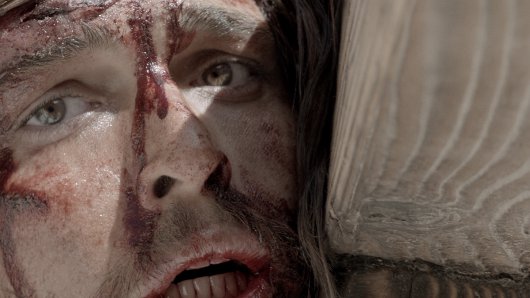
Kitsch Jesus is a Jesus without scars.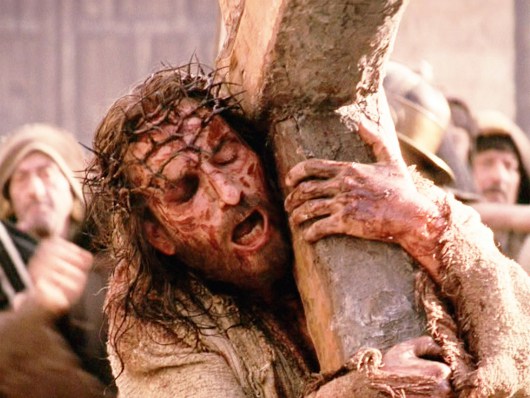
Yes, Christians believe in a victorious Christ who was resurrected from the dead—who brings wholeness, power and joy into our lives. But there is no resurrection without crucifixion, no victory without pain. While kitsch Jesus wanders the web without care or fear, the real Jesus sweats drops of blood. While kitsch Jesus holds out his soft clean hands, the real Jesus retains the scars from his ordeal even after his resurrection.
Kitsch Jesus sidesteps the crucifixion part of Jesus’ life, proclaiming a pain-free faith in a Jesus without scars. When we believe in kitsch Jesus, however, three problems follow:
1. We rob Jesus of his uniqueness. When Christians talk about Jesus being unique we normally mean that he’s the only way to God. But an equally astonishing claim is that in Jesus we see a God who suffers. No other religion makes such a claim about its deity. All other Gods remain distant from a sinful, broken world. This One doesn’t.
2. We rob Christianity of credibility. The world doesn’t need kitsch Jesus. He’s too sentimental to be of much use, let alone worthy of worship. But the real Jesus has sweat and scars and dirt beneath his nails. And it seems to me the world has a little more time to listen to those who have followed this Jesus through their own crucifixions, yet still believe.
3. We become kitsch ourselves. Here’s a simple spiritual law: we become what we worship. And when you worship a happy, successful Jesus without scars you’ll soon expect to be smiley and pain-free yourself. Church will become a place to cheer and clap, not to weep or ask doubt-filled questions. The only testimony worth sharing will be the glowing miracle story, not the mysterious way God transforms us through difficulty.
I recently heard from a woman whose husband could no longer be a leader in their church because he was suffering from depression and so couldn’t be an example of ‘victorious faith’.
I heard about a guy who shared with his church how he and his wife were learning something about God through their journey of infertility. He was later castigated by a church member for sharing a ‘broken testimony’.
That’s kitsch Jesus at work.
I mean no offence to the artists responsible for the pictures I’ve shared. Many are clearly talented and have a deep love for God. But we all need our ideas about God re-calibrated. Kitsch Jesus reminds us that God loves us and cares. The real Jesus strips those words of sentimentality, revealing a love made of nails and a care measured in tears.
***
Your Response
Why is kitsch Jesus so popular? Have I been too harsh about him? Tell me now. Call me using the ‘Send Voicemail’ button, or leave a comment. Please also rate and share this podcast on iTunes to help others discover it.
Announcements
- I’m excited to add Celebration Church in North Carolina and Houghton College in New York to my speaking tour of the US in October-November. If you’re interested in having me speak please get in touch soon
- Next events on my UK schedule include speaking at Lochs Heath Free Church, Oxford Community Church and St Aldates. Drop by if you’re in the area
- I’ll be speaking at the Christian Retailers Retreat June 2-6. Bookings can be made here
Subscription Links
Subscribe to More Than This and never miss an episode.
![]() Subscribe on your iPad or smartphone
Subscribe on your iPad or smartphone
Picture credits: Main image, good with animals, good with kids, Gird iron Jesus, loves his Dad, looks good, supermodels, laughs at the devil, drops in, meets prodigal sons, likes animals, especially lambs, loves lambs, lots of lambs, hearts in the sky, gives you his heart, boxer Jesus, all this, none of this, without scars






singwell
As usual, you have taught wisely, Sheridan. I agree entirely.
Sheridan Voysey
Appreciate that 🙂
Francisco Pier
Very thorough analysis that rings soundly. God love you. 😀
Sheridan Voysey
Thanks Francisco
"Moruti" Lutz
I’d be more worried about this “Jesus” being white and Caucasian (like imagined in most of western art over the centuries) than anything else…
Sheridan Voysey
He’s normally white Caucasian…
Emily Dixon
Kistch has been defined as “the beautiful lie” for a reason. It offers only the shallowest of representation of a truth. The viewer is not invited or provoked to truly grapple with the subject at hand.
True art moves it’s audience outside of themselves to either experience something from another’s perspective or to articulate a matter of the heart in a more relatable medium. Kitsch does not do this. It allows us to find comfort in the familiar and the easy.
A consequence being that Christians have been conditioned to Jesus as familiar and easy – not inviting or provoking us to deeper levels of intimacy and vulnerability before him.
Thanks for tackling a subject very close to this artist’s heart.
Sheridan Voysey
Great, great thoughts Emily – you’ve briefly described the heart of the problem with kitsch in general and kitsch Jesus in particular.
Emily Dixon
Thank you. I have spent years studying the role of the arts in our faith. My thesis topic was a comparison of Bezalel and Jeremiah and their shared roles in their culture.
It is my firm belief that the art produced in Christian circles has both weakened and misrepresented our faith. My hope is that we would once again approach this inspired medium as the act of worship it can be, and in doing so, demonstrate a real and transformative relationship with a God who inspires to the world.
Keep up the good work.
Sheridan Voysey
I like you already
Coach Brown
I understand you position. I struggle with how we portray Jesus as well. I believe we present a conflict by the two sets of images. One we like to connect with the humanness of Jesus touching our lives. But, we also are humbled by the cross images, then run to the resurrected and risen Lord proclamations. There exists a conflict in our theology teaching about Jesus which causes a faith question. Was Jesus human or God, and which view am I most comfortable associating with. Our evangelical proclamation is Jesus was fully man and fully God but he set aside his divinity while living as man. It is the only explanation that allows us to relate to both his life and his death. I could continue but I believe you understand my point.
Sheridan Voysey
And the other part of the problem is having to choose between the ‘God’ or ‘human’ aspect of Jesus at any one time. It’s natural for us to do but being both God and human together means everything he did, at every moment, was him being both God and man rather than one or the other. (To be clear, Jesus didn’t set aside his divinity at the incarnation, just some aspects – like omnipresence.)
Thanks for your reflections and getting me thinking.
Tony Whittaker
All those paintings creep me out. Totally. What particularly depresses me is when such stuff is used in the Majority World.
This is surely one reason why minimal line drawings, or stylised, even partly abstracted, images of Jesus or bible scenes are often much better, leaving the individual viewer to sketch in the whole story. Our minds are incredible at turning a few lines into a recognisable image and story. Sadly we will never again get the chance to see Rolf Harris ask ‘can you see what it is yet?’ about a few quick lines.
BTW I did see a heart in the sky a couple of years back. At dusk, over Derby, a plane was leaving a con trail which unusually was coalescing into smoke rings. One of them then shape-shifted into a heart shape for perhaps 10 seconds. It was high, very small, I doubt anyone else saw it, and I don’t claim it as a miracle or anything else. But it was a fun little reminder.
Sheridan Voysey
That’s a great story, Tony. I have no problem with God doing things like that. But if I see another artistic representation of one I may just scream!
Clayton
Loved the challenge about you desire what you worship Sheridan -answered a bit of a prayer of mine to understand that bit aspect a bit more!
Sheridan Voysey
Glad to hear it, Clayton
Peter David Meline
WAS JESUS AN UGLY MAN (BEFORE HE ROSE)?
“He had no beauty or majesty to attract us to him, nothing in his
appearance that we should desire him…Like one from whom men hid their
faces he was despised and we esteemed him not.” Isaiah 53:2, 3b
Jesus was “a man of simple appearance, mature age, dark skin, small stature, three cubits high, hunchbacked with
a long face, long nose, and meeting eyebrows, so that they who see him
might be affrighted, with scanty hair with a parting in the middle of
his head, after the manner of the Nazarites, and with an undeveloped
beard.” JOSEPHUS- Testamonium Flavianum
“And he sought to see Jesus who he was;
and he could not for the crowd, because he was low of stature.” Luke
19:3
Sheridan Voysey
Ah, but an ugly Jesus won’t sell too well in our cultures, David :).
Debbie Varnay
This is society putting Jesus is a box. This is who we want him to be not who he is. Without the full picture Crucifixion and all we cannot fully understand how much he suffered and gave up for our salvation. To reduce Christ to just the above is to minimise who he is. As for being ugly God doesn’t look at us from the outside but on the inside. This type of image does nothing to help society as a whole to gain understanding on who Jesus was.
Greg Dahlen
Well for me images showing Jesus in happier times don’t contradict pain and suffering in his life. I expect he had times of great joy and times of suffering.
Marc C
Why does he look like the lead singer of the Bee Gees in all of these?